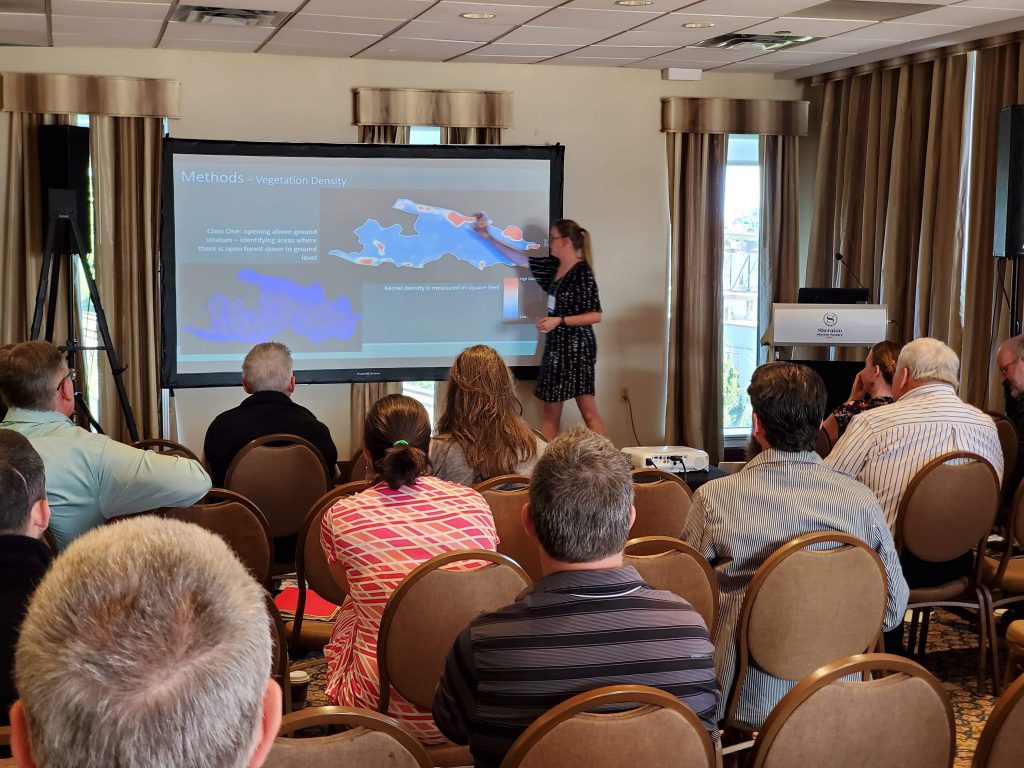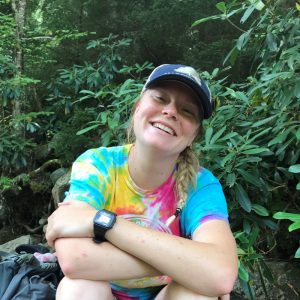VOF Preserve Manager, Joe Villari, and Preserve Technician, Summers Cleary, attended the 2019 Natural Areas Conference (NAC) held in Pittsburgh, PA in the second week of October. This year’s national conference focused on “At the Water’s Edge: Managing our Land and Water in a Changing Landscape”.
Joe Villari co-presented with Department of Conservation and Recreation Stewardship Manager, Michael Lott, on the management and restoration work being completed in areas throughout the Preserve. Their talk focused on ecological and public use access management strategies employed at the Preserve to protect sensitive ecosystems. These ecosystems are the very foundation of why the Preserve has been given the highest level of protection in the state of Virginia. Opportunities, like presenting at the NAC, enable staff to share our work with a much wider, larger scale audience and receive critical feedback on methods and approaches from other industry professionals.
Summers Cleary presented her graduate school research project studying the breeding distribution and ecological influences of Worm-eating warbler (Helmitheros vermivorum) breeding site selection in VOF’s sister Preserve, Crow’s Nest Natural Area Preserve. This talk described her approach to modeling the breeding habitat of the Worm-eating warbler using several different environmental factors, and how these factors can predict further suitable breeding habitat. This study presents a methodology for combining Geographic Information Systems (GIS) and Species Distribution Modeling (SDM) to study the breeding habitat of a species and determining those environmental factors or conditions that are most influential when choosing breeding sites.


Along with presenting their research, staff attended a myriad of talks and workshops. One such workshop was titled “Dendrochronology: Understanding Long-term Forest Change with Tree Rings” taught by Dr. Joe Marschall and Dr. Michael Stambaugh of University of Missouri. Dendrochronology is the scientific method of dating events (climatic or environmental change, history of fire, and geographically relative archaeological artifacts) by studying the patterns of growth seen in tree rings over time. This course provided an introduction to the science of dendrochronology focusing primarily on forest change and fire history of a landscape. The class covered field sample collection and laboratory analysis techniques, as well as methods of crossdating.
While the course used examples of studying the history of fire and fire as a management tool across red-pine and pitch pine ecosystems in Pennsylvania, it still held strong contextual information for the Preserve. Dendrochronology could potentially be used at the Preserve to help date some of our cultural sites and study environmental events throughout our landscape.
The ability to attend and participate in a conference such as the NAC, exposes staff to new methods, research, and management perspectives that can bolster current and future initiatives at the Preserve.
